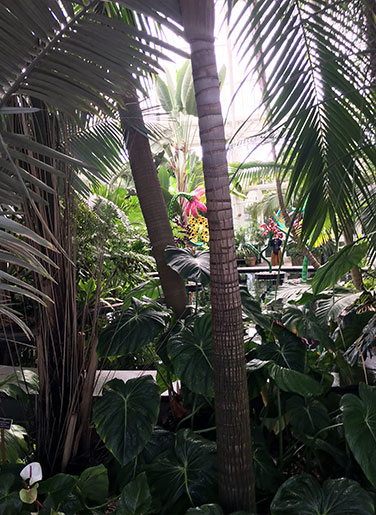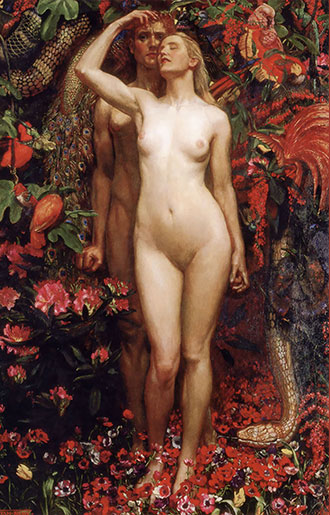In the third season finale of “The Crown,” Netflix’s addictive-as-chocolate-covered-potato-chips series about the British royal family, Princess Margaret has a fateful encounter with Roddy Llewellyn during a summer weekend at the Scottish estate of mutual friends. The charismatic but volatile princess — her stormy marriage to photographer Anthony Armstrong-Jones, the Earl of Snowden, on the rocks — is at loose, unhappy ends. And the hunky Llewellyn, 18 years her junior, is just the sort of good-natured chap to cheer her up.
When she asks what he does, he suggests he’s a kind of jack of all trades. But what he really loves is gardening. To which she replies that she has a garden that needs tending — on her 10-acre estate, Les Jolies-Eaux, on the Caribbean island of Mustique. In no time, the two are off to Mustique, where Llewellyn tends her garden — while also tending her garden, if you know what we mean.
Though the TV episode truncates the eight-year affair (1973-81) — which played a role in ending Princess Margaret’s marriage, the first English royal divorce since Henry VIII and Catherine of Aragon — it basically gets the details right, experts say, especially the part about gardening.
“Roddy was a gardener,” Princess Margaret biographer Christopher Warwick has noted. “And Margaret was hugely interested in gardening too, so they had that in common” — along with amateur theatricals.
Though the paparazzi-photographed liaison caused a scandal, Llewellyn, a baronet, would go on to a distinguished career as a gardening writer and TV show host. And yet, gardens and gardening remain lush, moist, sticky, tangled metaphors for hot, sometimes illicit sex, don’t they? In his letters to his wife, Josephine, French Emperor Napoleon spoke about longing to dally in her garden. In the musical “1776,” composer-lyricist Sherman Edwards gives Continental Congress delegate John Adams a similar ardor as he implies that despite his all-work-and-no-play reputation, his passion for wife Abigail is such that he still “can romp through Cupid’s grove with great agility.”
It all goes back to those first, naked-but-for-fig-leaves gardeners, Adam and Eve, and their serpentine temptation, forbidden fruit and carnal knowledge. They’ve been done almost to death in art and literature, a way for the pious to savor vicarious pleasure. Yet they still resonate. In “Eve’s Diary” (1905), one of a series of stories he wrote on Adam and Eve, Mark Twain makes them comical figures in their naïve curiosity, not the least of which is about each other. Lester Ralph’s au naturel illustrations for the book version caused some libraries to burn it, which amused Twain no end.
“Clothes make the man,” he wrote in one inscription, “but they do not improve the woman.”
You have to wonder what turn-of-the-20th-century librarians would’ve thought of Ernest Hemingway’s “The Garden of Eden,” a book so controversial that it wasn’t published until 1986 — 25 years after his death. His modern-day Adam and Eve, David and Catherine, engage in androgyny and gender role-playing on the Edenic French Rivera — much as Hemingway did with his fourth and last wife, Mary Welsh — as well as in a battle to control the storytelling that shapes David’s writing career. That he nicknames the manipulative Catherine “Devil” leaves little doubt as to who’s the serpent in this garden.
“The Garden of Eden” received mixed reviews, with some critics claiming it was butchered in the editing while the late Yale professor Harold Bloom included it in his list of works belonging in the Western canon. Another of those works is perhaps the greatest retelling of the fall of man and woman, John Milton’s “Paradise Lost” (1667). In a radical departure, Milton paints a portrait of a surprisingly egalitarian marriage, with Adam the more besotted, clingy, dependent partner — a role usually reserved for the wife — and Eve the smarter, more independent of the two. She loves Adam but less than he loves her, which makes her the more powerful emotionally. So when the magnetic Lucifer — who, let’s face it, has all the best lines in the epic poem — shows up, it’s really no contest.
Eve takes the baiter, fateful, fatal fruit. And Adam follows suit, knowing what will be lost — paradise, immortality — because he cannot imagine life without her. They now have sex with full, lustful knowledge of the act and sated, fall asleep — only to waken after terrible dreams with another kind of knowledge: They have betrayed God.
Sex can be lethal, and love may not be enough. In Nathaniel Hawthorne’s horror story “Rappaccini’s Daughter” (1844), Giovanni, a student at the University of Padua — home to the world’s first botanical garden — falls for the daughter of a secretive botanist who experiments with poisonous plants. The young woman, Beatrice, however, is immune to such toxins — because she is poisonous herself.
Beatrice yearns for Giovanni to look at the innocent heart that lies within. But in time he, too, grows poisonous. Developing an antidote to set her free, he succeeds only in killing her. As in Hawthorne’s short story “The Birthmark,” he suggests that you cannot destroy the essence of someone without destroying the person herself.
Based on an Indian story revolving around Alexander the Great, “Rappaccini’s Daughter” has inspired Stevie Nicks’ song “Running in the Garden,” DC Comics’ Poison Ivy and Marvel Comics’ Monica Rappaccini and her poison-immune, poison-infecting daughter Camilla Black, among many creations. The story’s theme is the limits of love.
And yet, love is all we have. Though Roddy Llewellyn said he wanted his relationship with Princess Margaret to go on forever, he eventually married someone else. The princess, though, took a stiff-upper-lip approach to the end of the affair and remained friends. When she died in 2002, her sister, Queen Elizabeth II, thanked mutual friend Anne Glenconner for introducing the couple, “because he made her happy.”
We’d like to think that Llewellyn might’ve thought what Twain’s Adam observes at the end of “Eve’s Diary,” when, standing over her grave, he laments, “Wheresoever she was, there was Eden.”






